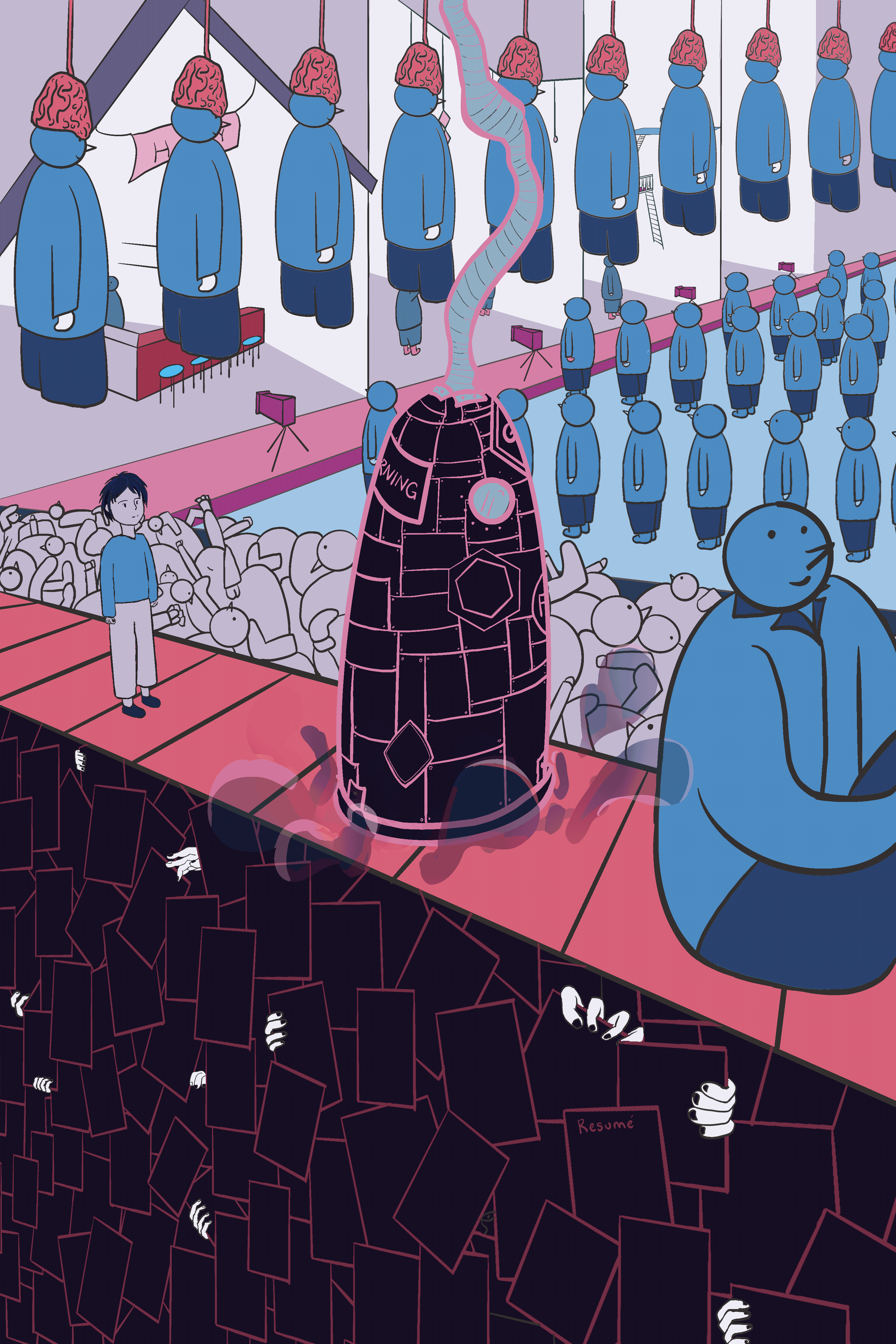Anonymity is a double edged sword in the digital world. This piece strives to illustrate the edge dipped in poison, the negative consequences of pursuing anonymity in design. In the technology industry, anonymity serves as a means to several ends including privacy, security, and inclusivity. While the privacy and security of people are ensured, the objective of creating an inclusive and diverse space has missed the mark. As a result of attempting to maintain anonymity, technology giants and leaders have unintentionally (giving them the benefit of doubt) crushed any chance at true representation (either in design or in their workforce).
The “Corporate Art Style” trend has oversaturated the technology space. Every new startup or tech service outreach is populated with beings pieced together through organic shapes to display disproportionate bodies and unrealistic skin colors. In Solar Sands’s Youtube critique video, “Why do ‘Corporate Art Styles’ Feel Fake?”, this style of depicting people is said to stretch the idea of inclusivity so far that “they end up designing people that don’t even exist”1. This process of dehumanization transforms people into something that can be anybody, but is no one, passively setting a new standard for individual representation and identity. The trend pushed by big tech corporations has trickled down to all levels of tech and set an expectation budding designers cannot deny. This standard has managed to influence individuals to take active participation in this process of fictional evolution, and start making up for the gap between perception and reality with real life transformations.

The blend between the physical and digital world has never been more ambiguous. In 2018, there was a spike in cases of surgical operations incited by an urge to look more like an augmented Snapchat filter2. In “Behind the Screens”, people are willingly putting themselves through this dehumanization trial. There is no illusion to hide the fact that their afterforms are being manufactured and used to film and create ruses of happiness. There is no deception that what is happening is unhealthy, yet people claw their way in to partake anyways; they put on a sultry face for Instagram, a family-friendly face for Facebook, and a brave face for LinkedIn, buying into the narrative of changing oneself in order to fit into digital society3. We often forget the relationship that led to this ambiguity is a two-way street, as the digital too attempts to replicate the physical. But when does contrived digital influence overtake efforts to accurately reflect physical reality? Or has it already?
Design is a tool that draws boundaries. It plays a huge role in not only influencing human behavior, but also molding the mindsets of growing generations. Instead of creating an inclusive culture, technology corporations have chosen to play it safe, drawing lines that only exist in fantasy. This apparently ‘safe’ decision, however, has a much deeper impact on reality than many consumers and designers realize (or want to consciously accept). This piece examines and expands on the fantasy that the Corporate Art Style has written. But there is a footnote I want to add to the critique of digital dehumanization not depicted in the illustration. Behind every machine, every digital impact, there lies an active choice made by a human. I hope designers and those at the forefront of technology carefully weigh their influence on our world the next time another feature or app is shipped.
footnotes + references
1/ “Why do ‘Corporate Art Styles’ Feel Fake?”, Solar Sand, 2021
2/ “People Are Getting Plastic Surgery to Look Like Snapchat Filters, Doctors Warn”, Jaime Ducharme 2018
3/ https://www.boredpanda.com/funny-celebrities-social-media-memes/?utm_source=google&utm_medium=organic&utm_campaign=organic
Ducharme, J.D. (2018) ‘People Are Getting Plastic Surgery to Look Like Snapchat FIlters, Doctors Warn’, 3 August.
Sand, S.S. (2021) ‘Why do ‘Corporate Art Styles’ Feel Fake’, 6 February.
Tymulis, Laurinavičius, D.T., R.L., (2019) ‘Celebrities Are Making Fun Of How Differently We Present Ourselves On Social Media Platforms With New Viral Challenge’
author
Olivia is a self-taught product designer trying to find her space in the tech industry. Recently, she’s been concerned with the societal pressure on individual timelines and how technology has impacted these peer expectations. On one hand, she’s afraid of all the negative behavioral shifts people have undergone as a result of technology (on mental health, toxic productivity, ect.); on the other hand, she’s fascinated with the potential of positive change (increased empathy, accessible education, ect.). As she ventures further into AR and design, she strives to incorporate her morals and ethics into her work.
first published for projektado magazine issue 1: anonymity in design / may 2021
